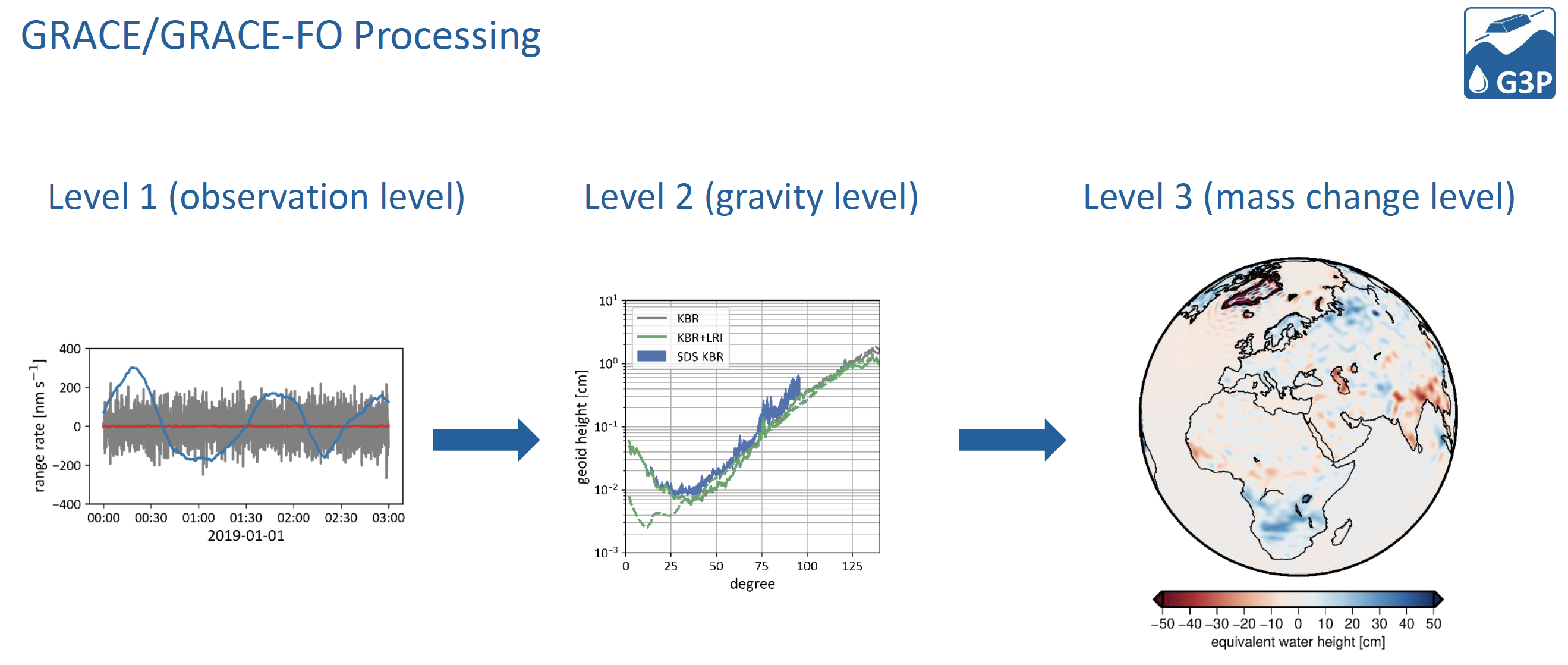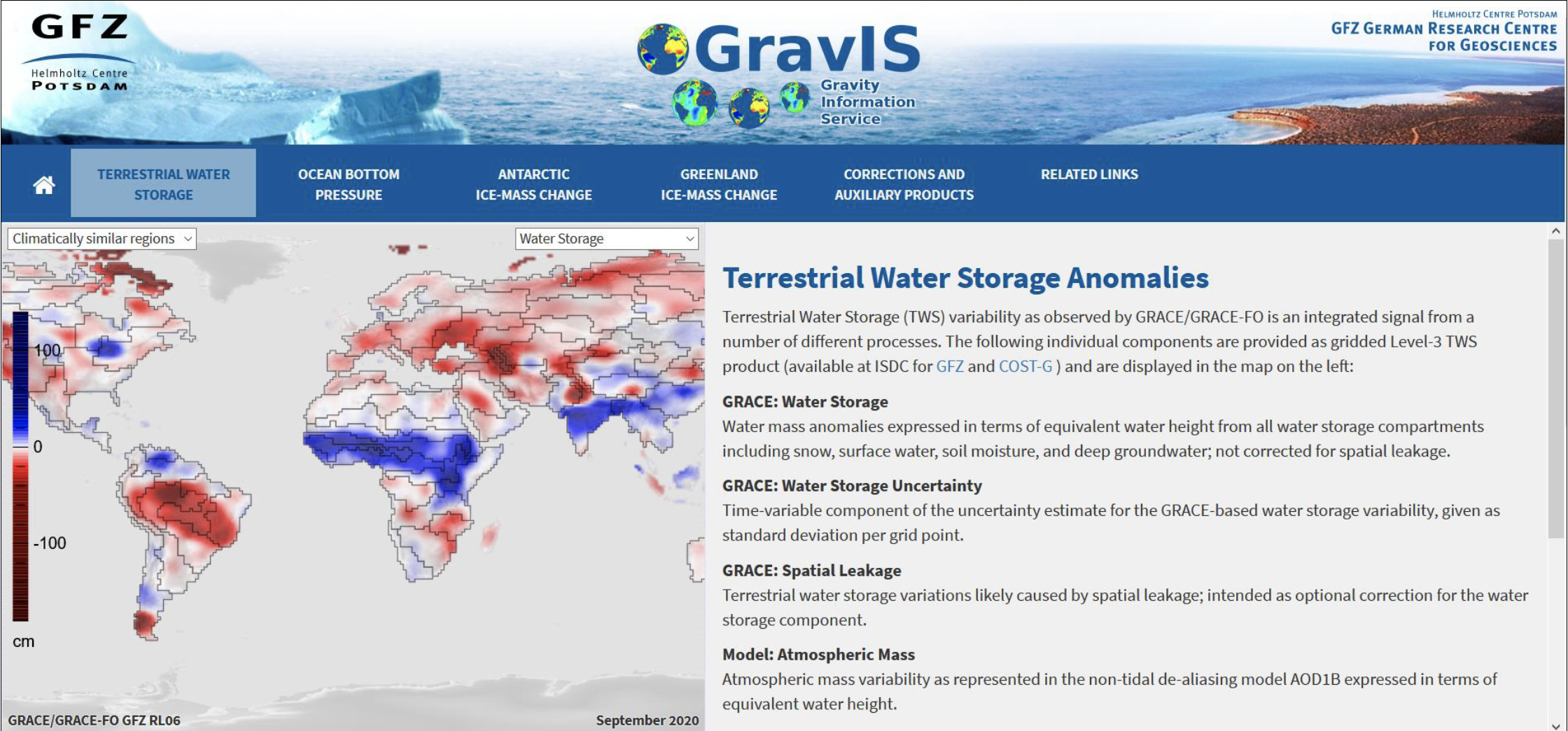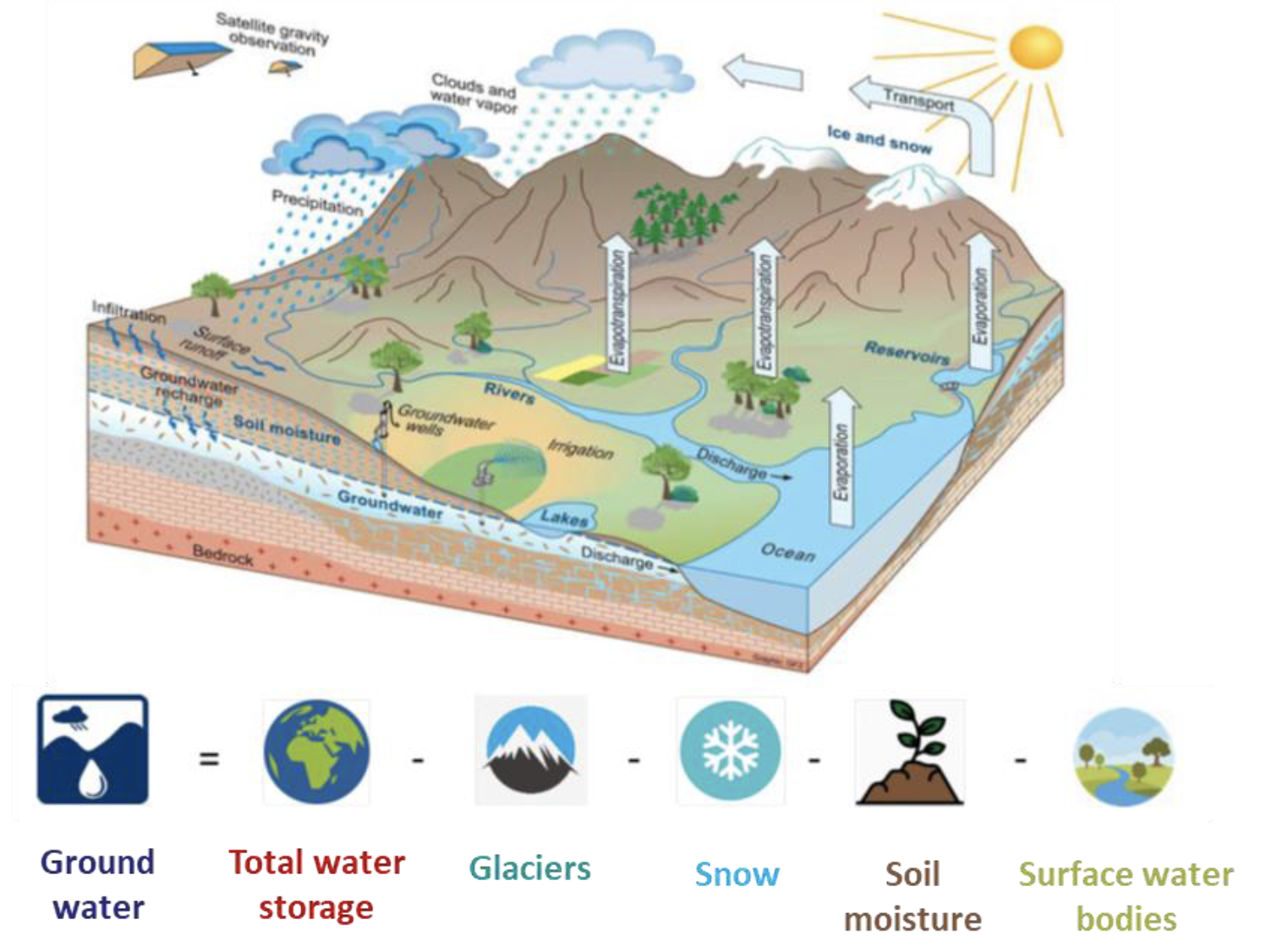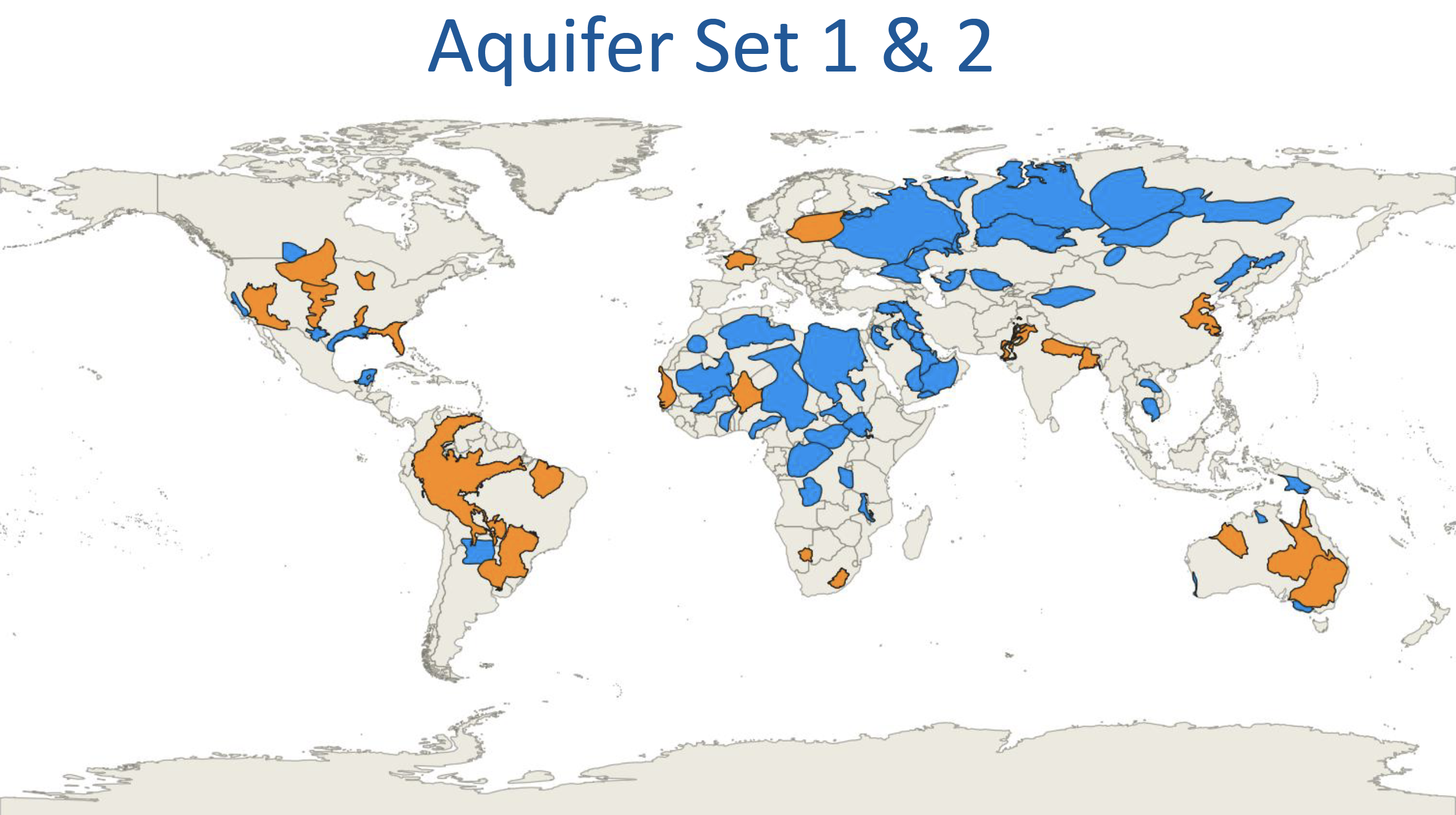News & Events
Reviewing one year of G3P
On 12 February 2021, a yearly review meeting was held in which members of all five G3P work packages presented their progress to an external project reviewer, a European Commission project officer and an advisory board. After all presentations were given, the reviewers reflected on them and gave valuable advice for the upcoming year.
Satellite gravity data processing
After a warm welcome to the external reviewers and a brief general update on the project progress by project coordinator Andreas Günther, the first block of presentations focused on Work Package (WP) 2 on satellite gravity data processing. WP2 leader Adrian Jäggi of the University of Bern first gave a general explanation on the GRACE/GRACE-FO measurement principle, which entails tracking these satellites’ absolute and relative motion to give insight about the earth’s gravitational field. Jäggi also touched upon some of the main challenges and their solutions. For example, GRACE/GRACE-FO can’t distinguish between geophysical subsystems. Therefore, a key part in using GRACE/GRACE-FO products is signal separation.
After this introduction to WP2, more detailed presentations followed on Level-1B processing (observation level), Level-2 processing (gravity level), combination (COST-G) and Level-3 processing (mass change level). Related to Level-1B processing, Saniya Behzadpour (TU Graz) presented on accelerometer measurements and the linked accelerometer transplant. The accelerometer on GRACE-D degraded during the in-orbit checkout phase, with an accelerometer transplant being the solution proposed for recovering GRACE-D accelerometer measurements. Afterwards, Andreas Kvas (University of Bern) explained the positive impact of alternative accelerometer transplant on estimated gravity field, resulting in a lower noise level, and presented ongoing developments like empirical noise modeling.
Ulrich Meyer, Astronomical Institute University of Bern, presented the combination service for time-variable gravity fields (COST-G). COST-G is a product dedicated to the combination of monthly global gravity field models. Eva Boergens, GFZ, was the last presenter for WP2 and she focused on level-3 processing and dissemination. Thanks to the work done in this work package, Terrestrial Water Storage (TWS) anomalies are now available via GravIS portal (i.e this new project was developed under the G3P project). It can be accessed here: http://gravis.gfz-potsdam.de/land. GravIS allows users to view and download GRACE and GRACE-FO level-3 data. It does not only contain terrestrial water storage time series, but also ocean bottom pressure ice mass loss data from Greenland and Antarctica.
Quantification of storage compartments
The last hour of the morning programme was dedicated to the quantification of storage compartments. This work package is led by the Technical University of Vienna (TUW) and Adam Pasik (TUW) introduced this block of four presentations, with the simple equation: groundwater = GRACE-derived total water storage – four other storage compartments (glaciers, snow, terrestrial water bodies and soil moisture). The introductory presentation was followed by four detailed presentations on each of these four storage compartments. The first storage compartment discussed was soil moisture. One of the tasks presented, was the development of a gap-filled soil moisture product based on Copernicus Climate Change Service (C3S) data and how that will be used. Consequently, Inés Dussaillant of the University of Zürich presented the progress related to glaciers. And for this part of the project, one planned milestone was already successfully completed in this first year, namely the delivery of a dataset on global glacier mass change. The next presentation focused on the development and quality assessment of the next generation snow water equivalent (SWE) product, presented by the Finnish Meteorological Institute. This WP4 block was concluded with a joint presentation, by CLS, LEGOS and Magellium, on rivers and lakes products.
Groundwater product development, evaluation and service preparation
The afternoon programme started with a session on the groundwater product development, evaluation and service preparation, which is the fourth work package and is led by GFZ. After a general introduction, another presentation of GFZ followed on the groundwater product development. In this presentation, the need was expressed for filtering of GRACE/GRACE-FO data to remove noise and correlated errors (stripes). These consistently filtered data sets of each storage compartment are being provided by WP3. Two possible approaches were presented for this. The first approach, applying the anisotropic decorrelation filter that is used for GRACE/GRACE-FO data, was eventually not deemed a suitable method. The second potential approach is to apply an isotropic gaussian filter and adjust the filter width/strength to GRACE-based terrestrial water storage.
IGRAC presented the product evaluation and the selection of large aquifers worldwide for G3P validation. The latter has already been successfully completed. For these selected aquifers, the G3P product will be compared with groundwater storage in-situ data. The Ogallala Aquifer was selected as case study for this evaluation and preliminary results of this study were presented. Finishing this study was one of the next steps presented. Another presented next step was the calculation of groundwater storage with in-situ data for the other selected aquifers and comparing this data with the G3P product (as soon as the product is available). Finally, the EODC presented its efforts for bringing G3P towards an operational C3S service. The main focus for 2020 has been on starting knowledge transfer.
Dissemination, exploitation and use cases
The next block of presentations was reserved for dissemination, exploitation and use cases. Claudia Ruz Vargas (IGRAC), leader of WP5, presented all dissemination activities including this G3P website, several conference participations and one published scientific paper. Since the majority of dissemination activities are scheduled for the second half of the project duration, there was also a presentation on future activities.
The presentations were concluded with a brief overview of the administrative, legal and financial part of the project. This is part of the Work Package I and was therefore presented by WP leader Julian Haas (GFZ). The review meeting was concluded with detailed and very helpful feedback from the reviewer and the G3P advisory board.
